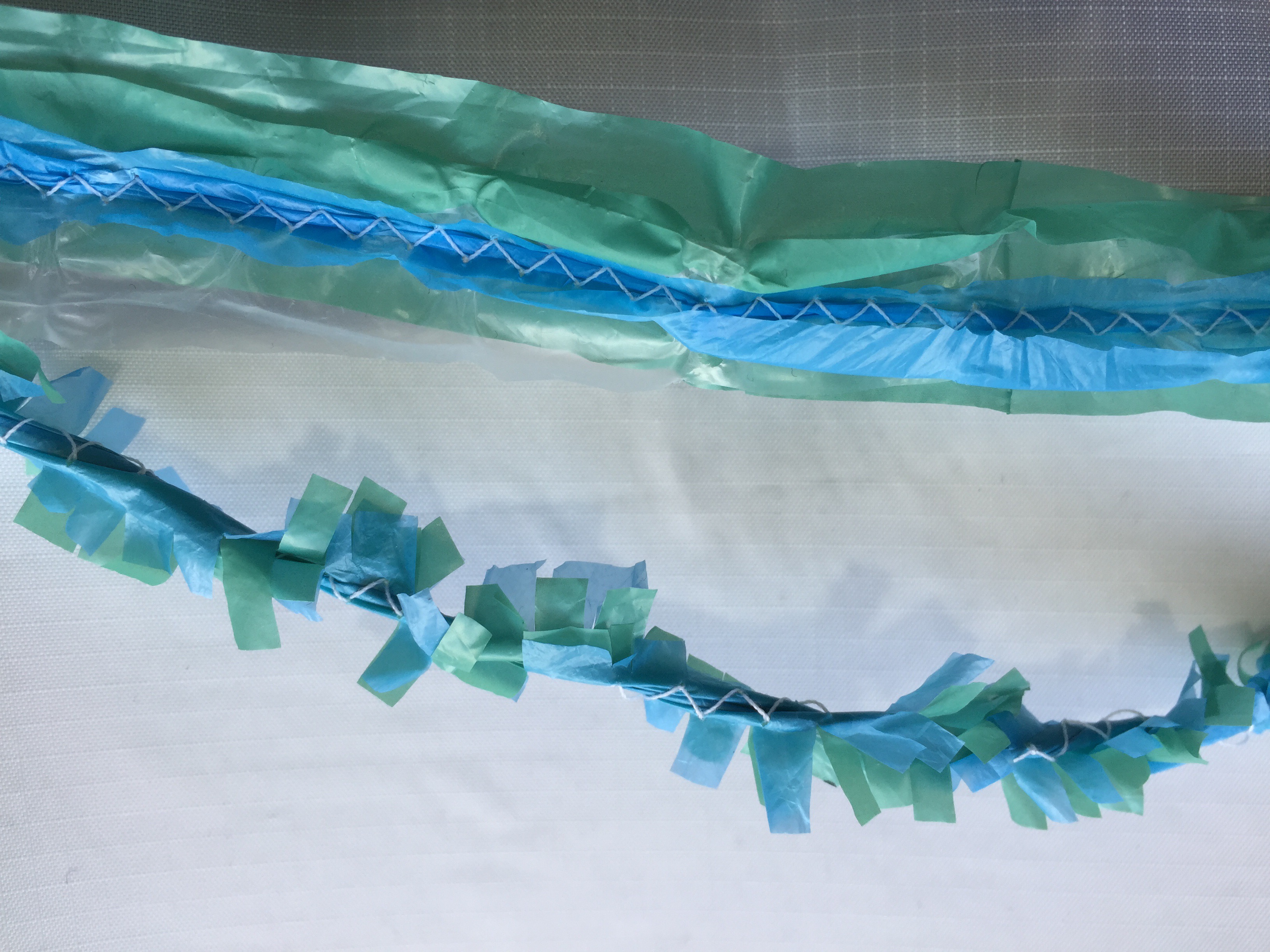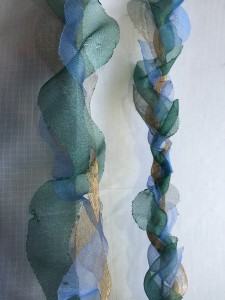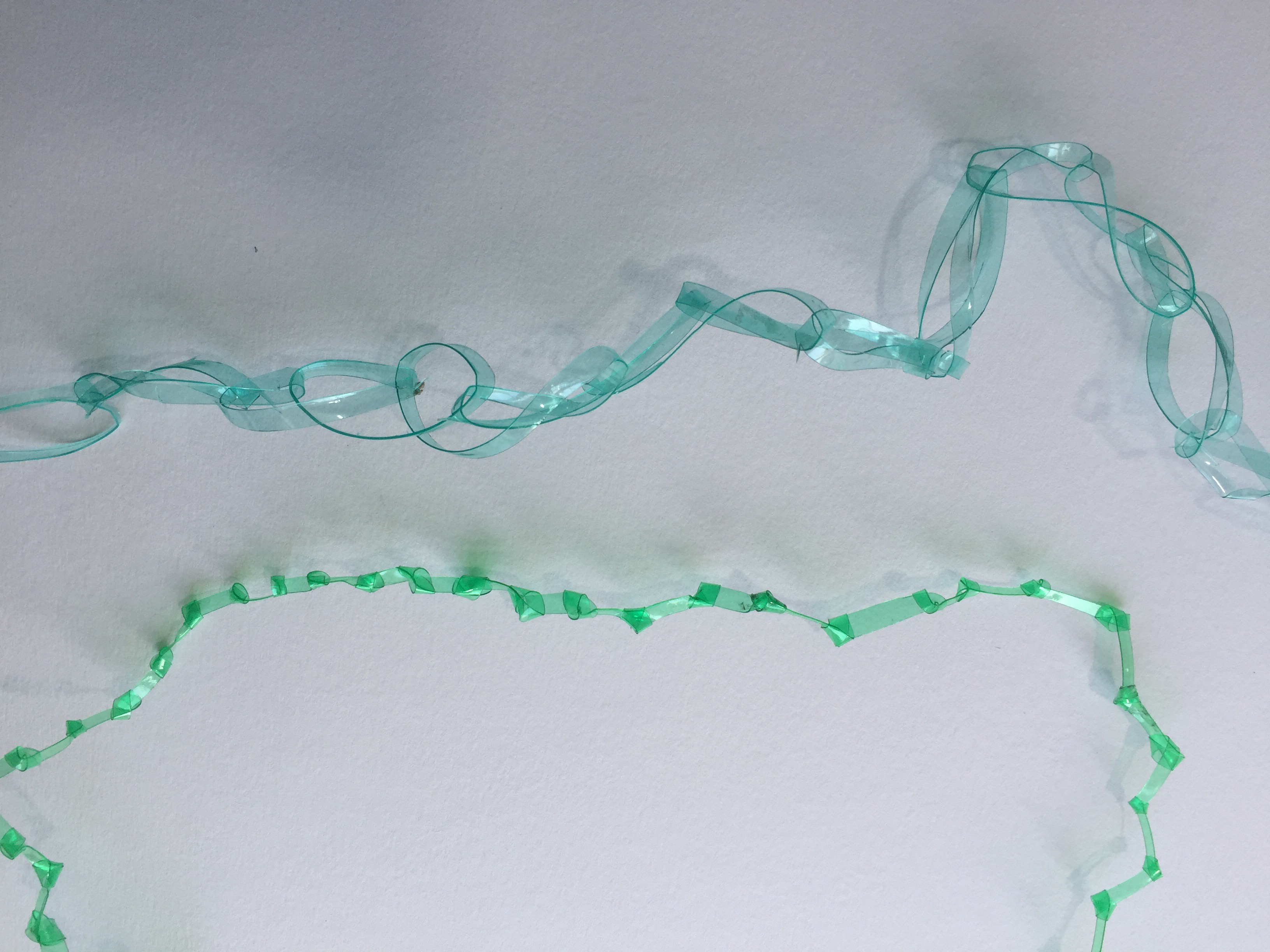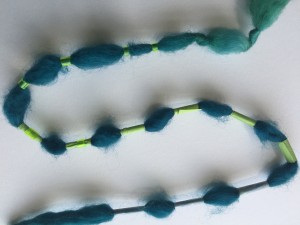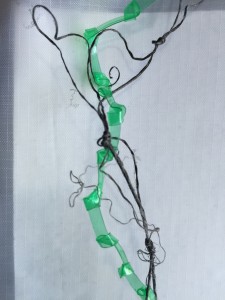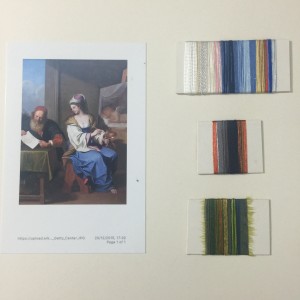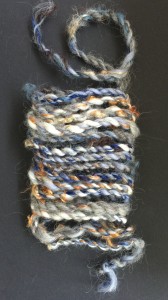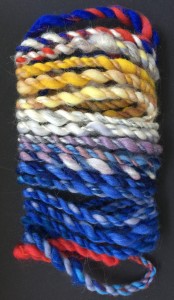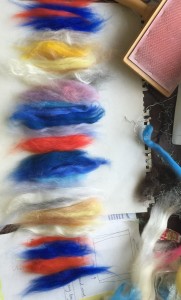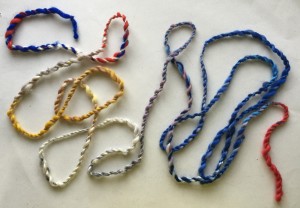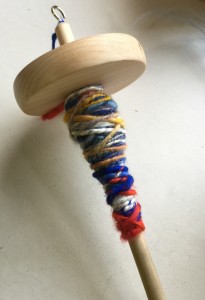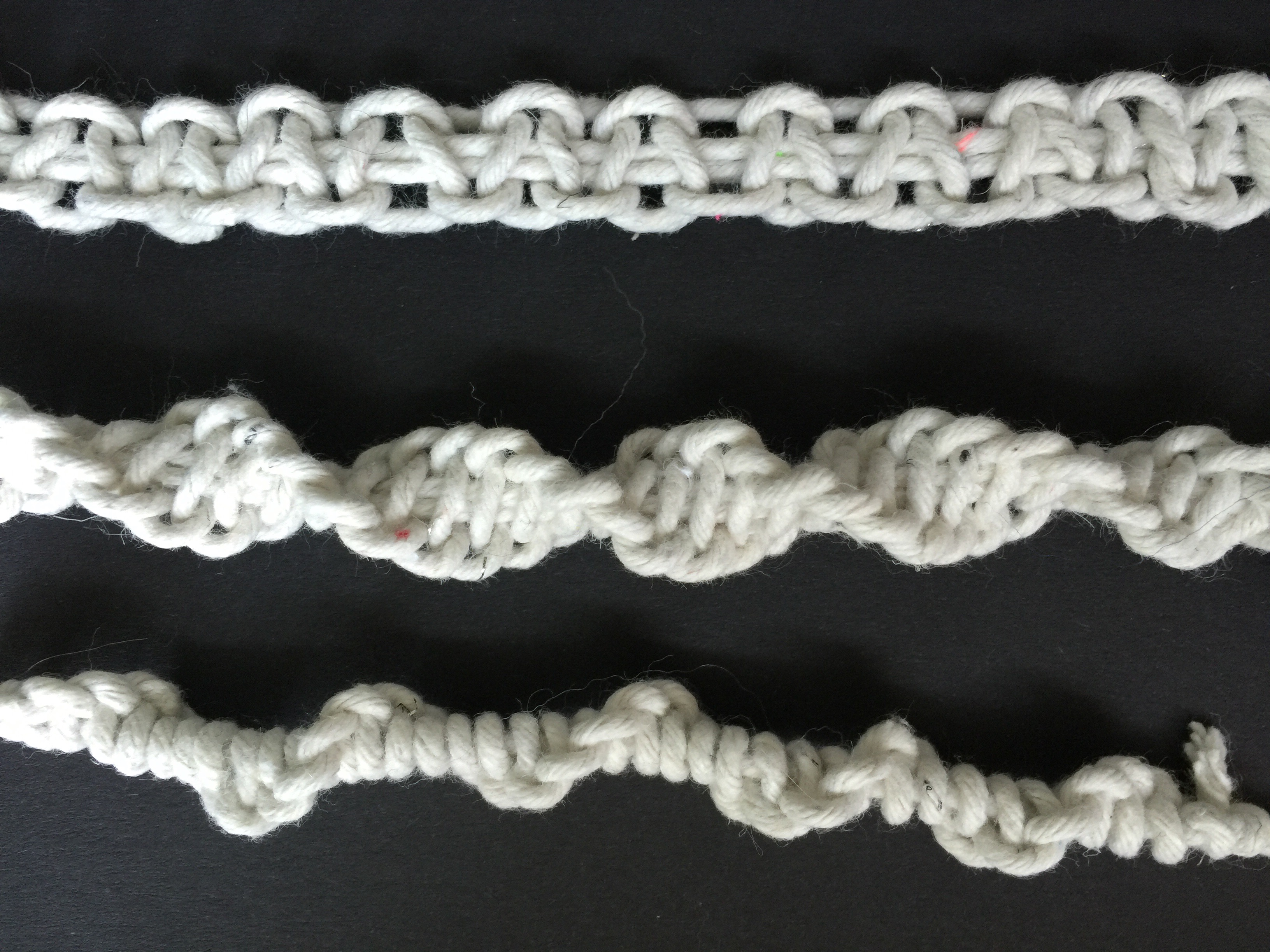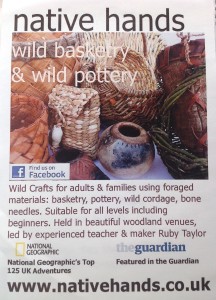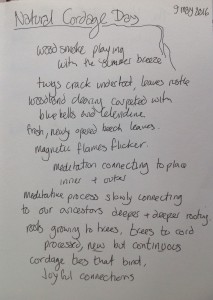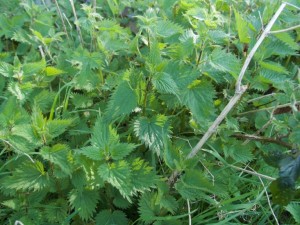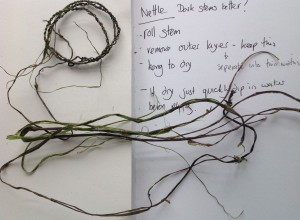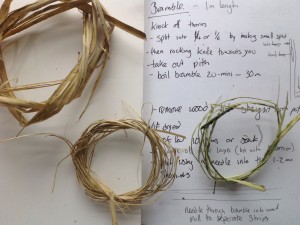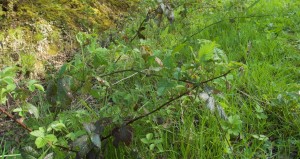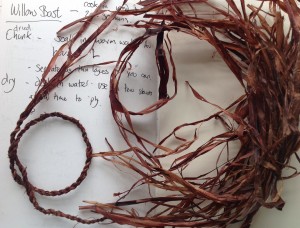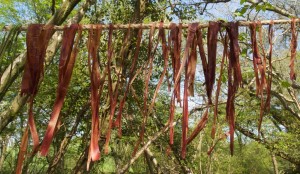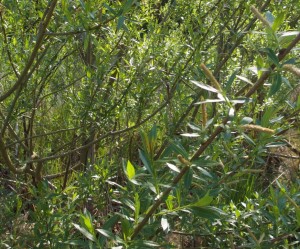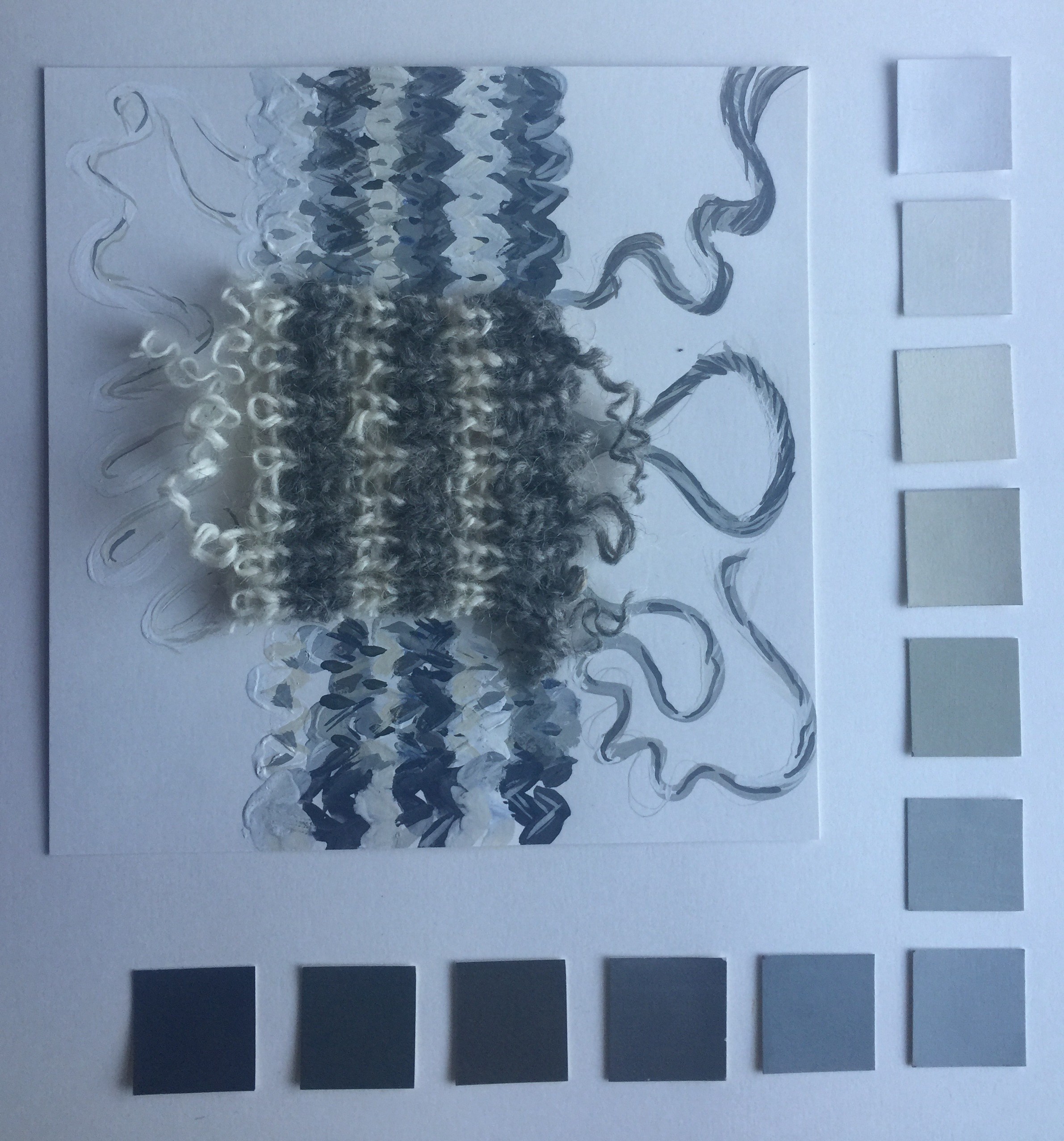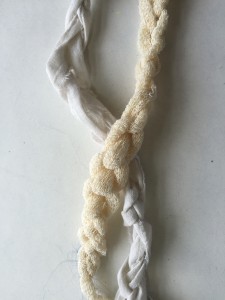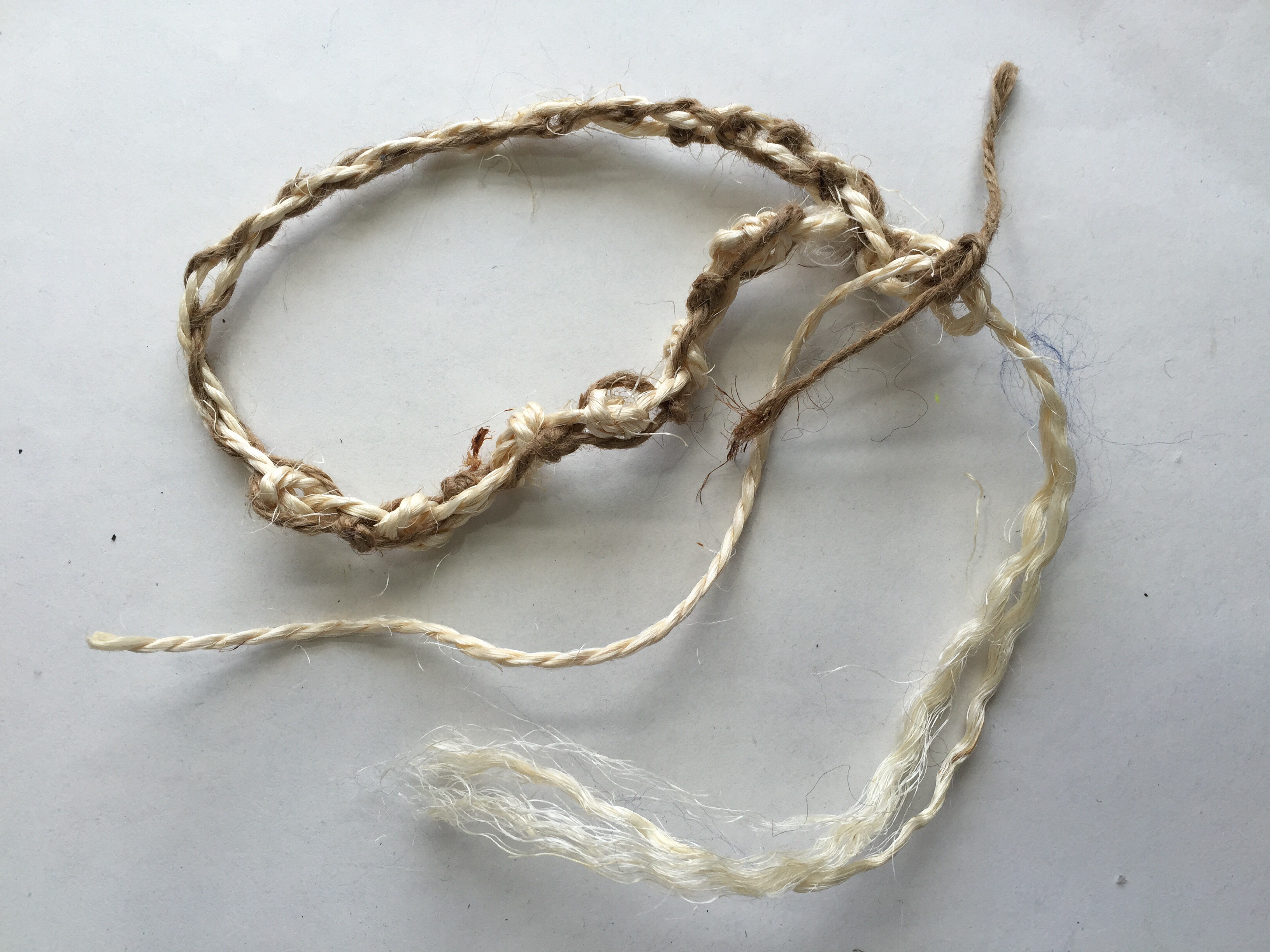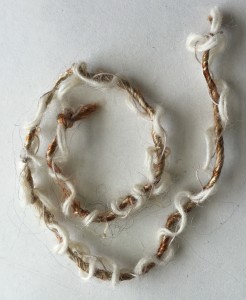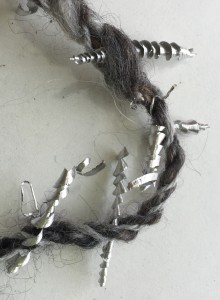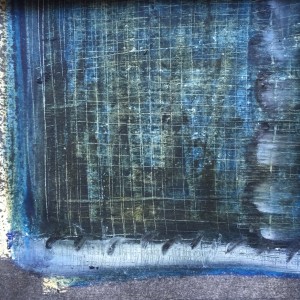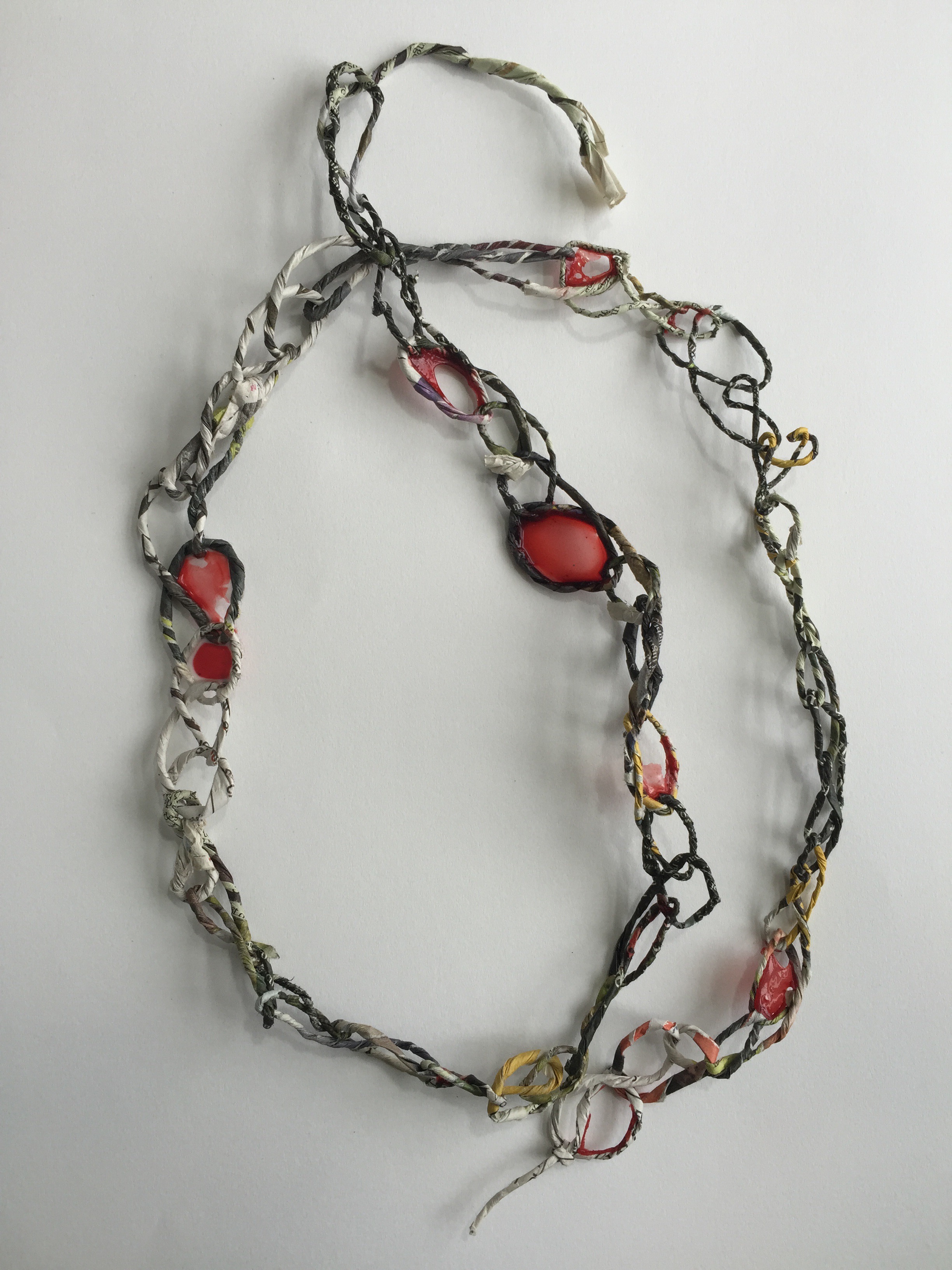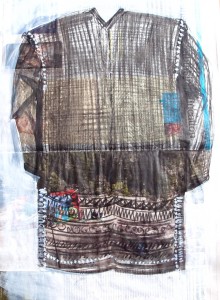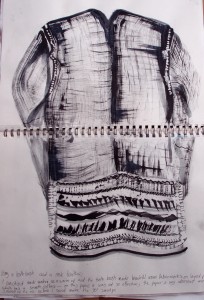The aim of this exercise is to select and explore new and appropriate making and de-constructing techniques to translate lighter and more transparent qualities into my yarns.
The particular qualities I can observe in the watercolour stripe patterns are : translucence, blurring, tonal transitions, airiness.
Plastic bags stitched and snipped – don’t look very precious but the colours are good.
Organza is light and airy – I’m not sure that I like it at all. I like cutting with a soldering iron though as this gives a good fray proof edge that could be useful.

I have some amazing silk that deconstructs itself, fragile with washing and wear. The warp and weft pick up colours from my watercolour stripe patterns . Using my fingers and a needle I frayed and shaped the fabric. I like the way that once freed of the warp/weft grid the threads start to undulate, creating little windows. The frayed green edges visually bleed and blur like the watercolour paint.
I have a book called Contemporary Whitework by Tracy A Franklin & Nicola Jarvis, I can use it to explore other pulled thread techniques.

This thick yarn was bound with clear and green tape and then teased out to emulate the watercolour blur – it’s not very interesting so moving on swiftly…
Maybe this needs something added later??
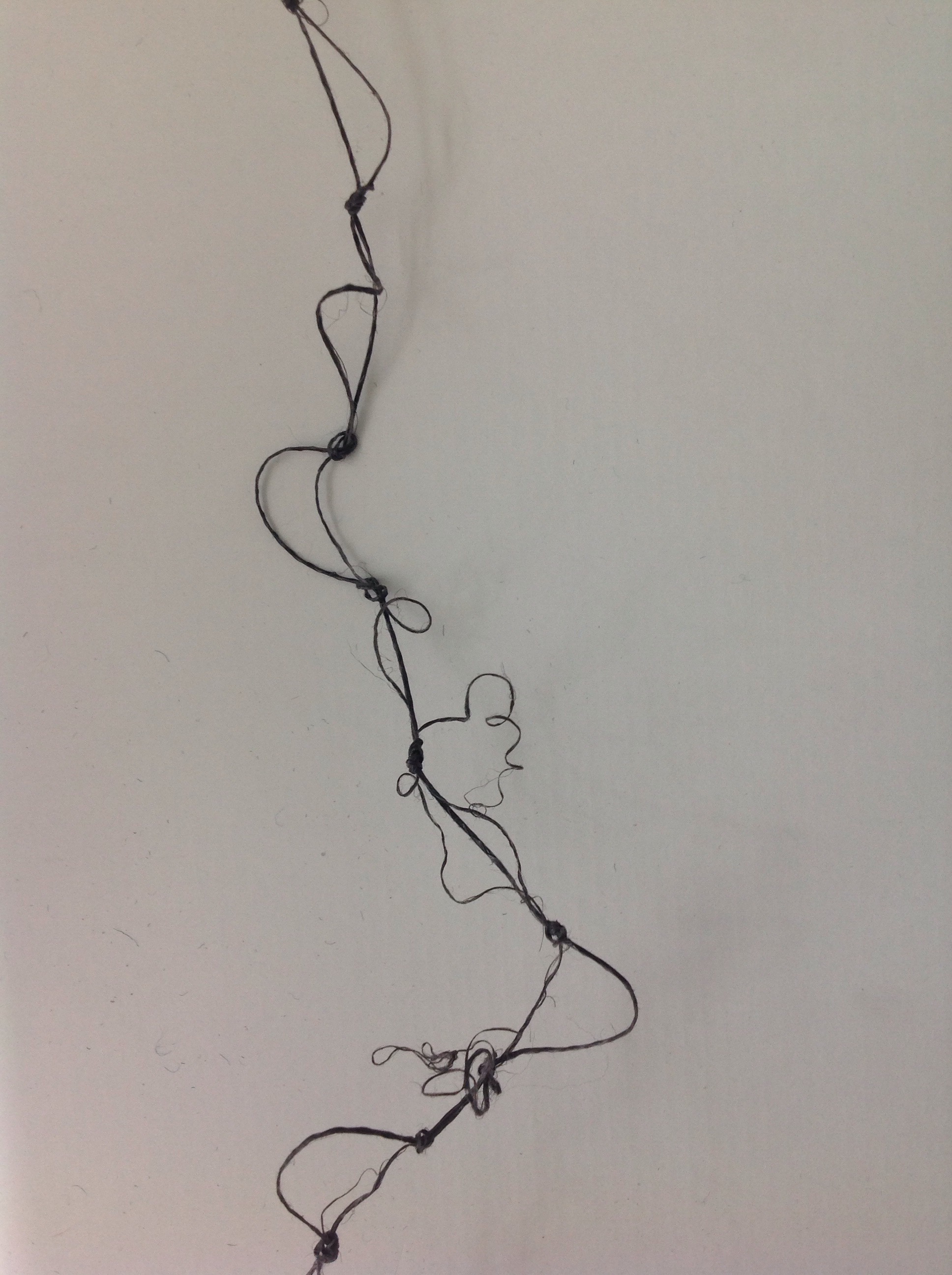
This is a yarn I made at the beginning of the project by deconstructing a packaging binding tape, I really liked the airiness of the structure and want to develop it further.
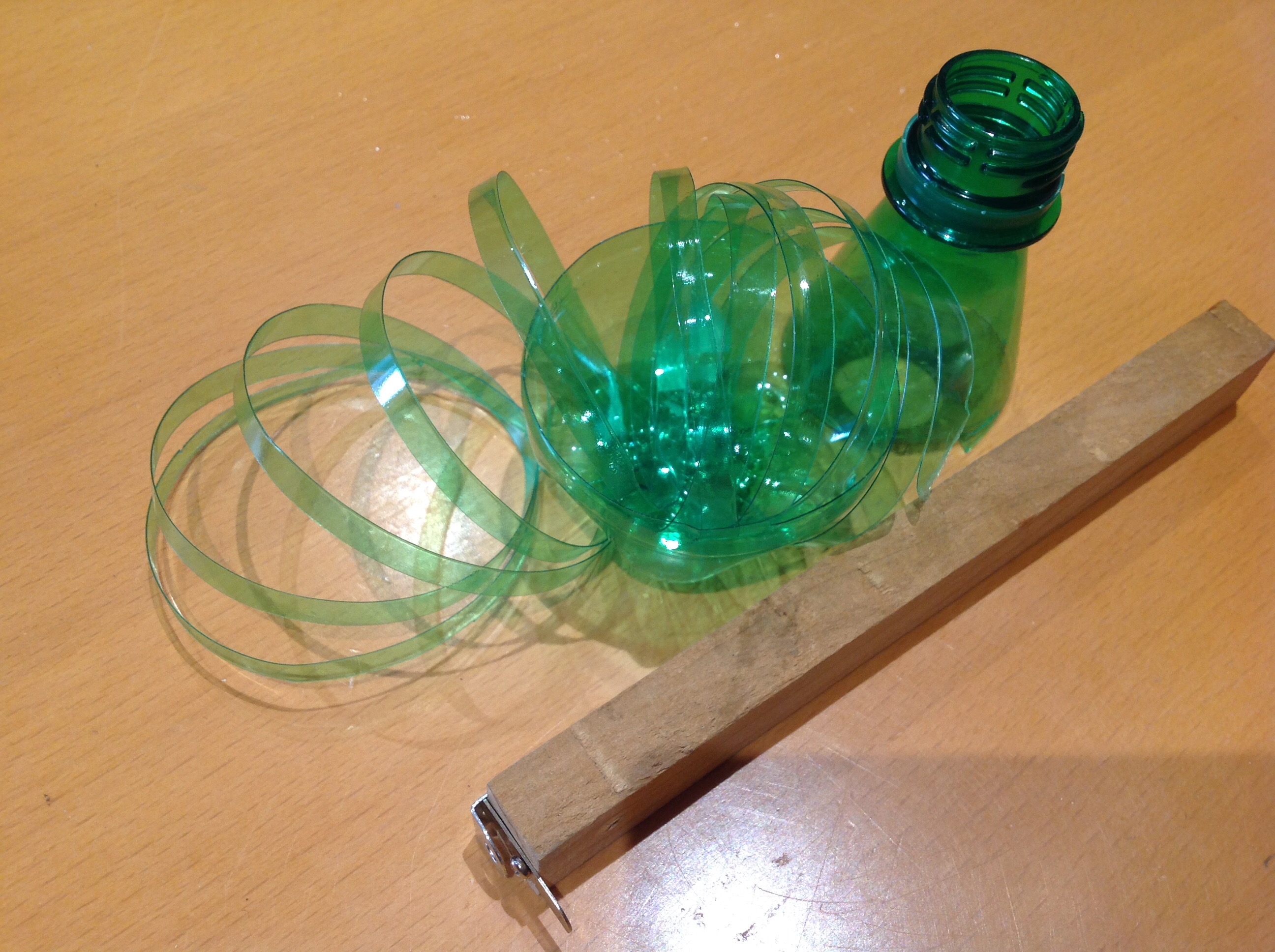
I’ve made a tool to turn plastic bottles into string, I’m gathering other people’s rubbish now to turn into something beautiful!
I experimented with knotting to make little string of sparkling diamonds, twisting the strand beyond the plastic limit, and using heat to help retain the twist. Finally for now I used little bits from a fluorescent plastic straw that I found discarded in the park. I’m really pleased with this, it is translucent, has tonal transitions where the plastic is stretched and compressed, and an airiness from the structure.
I added the fluorescent straw to this yarn , replacing some of the tape and making a more interesting and physically stronger yarn
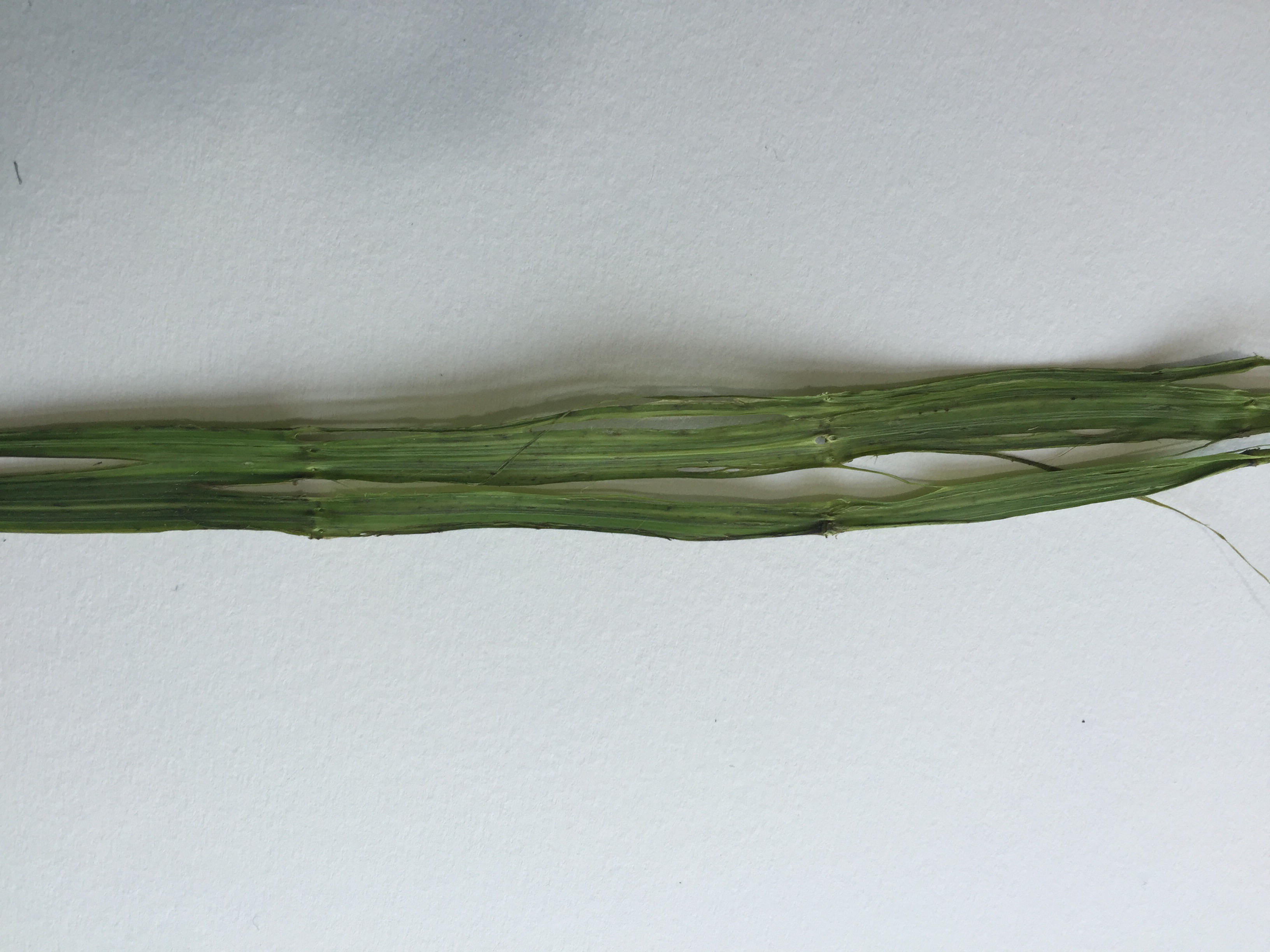

De-constructing and reconstructing nettles is my favourite finding of this project. When fresh, the green is vivid but this dulls in a very short time so perhaps not the most successful for this exercise. I was proud of the way that I joined the shapes while constructing and there are many possibilities for taking this technique further. I have been looking at a book called ‘The Art Fabric:Mainstream’ by Constantine Larsen. A collection of structural textile arts from the 1970’s. I can see how contemporary textiles has built on these early textile pioneers and I’m really excited about exploring 3D structural textiles soon.
This is a simple knotted plastic bottle strand, combined with knotted shredded parcel binding strip. The binding strip looks very organic and makes me wonder about combining natural and manufactured materials. Particularly plastics with nettle as both are considered fairly worthless. A used bottle is rubbish and nettle considered a weed, I would like to turn them into something profound.
Save
Save
Save

